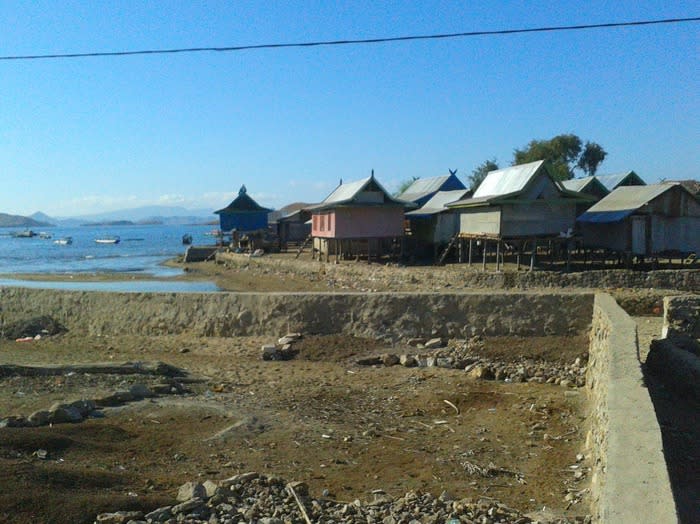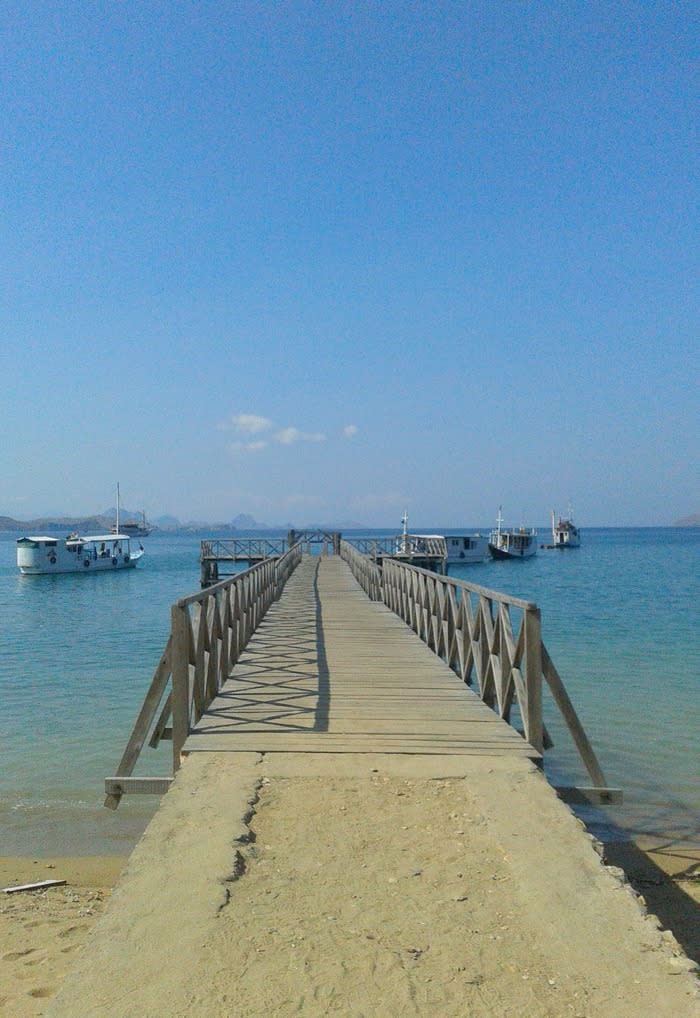An unforgettable detour to the Komodo village
At first, my three-week itinerary did not include paying a visit to Komodo Island in East Nusa Tenggara, the world-renowned island where one can see the last descendants of dinosaurs – the Komodo dragons.
The reason was obvious; it was too pricey for a budget-traveler like myself, and I wanted to cross the whole of the Nusa Tenggara archipelago. Most of the travelogues I read said that one had to rent a boat or join a fancy cruise to get to the island, and I had to save every penny if I wanted to make it to Maumere on Flores, an island further east.
Nonetheless, my plans changed after I met a man at a Damri bus stop on the outskirts of Mataram in Lombok. He introduced himself as Tue, a 19-year-old Jakartan whose parents originally came from Lembata, an island on the eastern end of Flores popular for its seasonal whale hunting.
Soon, we became friends. He told me that one could hitch a ride on a “locals” boat headed for Komodo village. And the fare, he said, was extremely cheap for the three-hour journey: just Rp 20.000 (US$1.6) one-way.
“It’s worth a try,” I thought. And so the detour began.
Reaching Labuan Bajo, Flores, after nine-hour sail through the Sape Strait, we walked our way to the fishermen’s jetty next to the harbor. We sipped on a cup of coffee at a warung before hopping on one of the two boats available that morning. Locals call such boats ojek kapal.
Fortunately – or perhaps unfortunately – the next Saturday there would be a wedding ceremony in Komodo. The daughter of the Komodo village chief was going to marry a man from the neighboring Seraya Island. Our boat was carrying sound systems for the celebration. Thus, there wasn’t going to be an ojek kapal on Saturday and we would be trapped for two nights on the island. The only problem was we still hadn’t figured out where we would sleep.
After passengers grew bored of the scenes of paradise – calm deep-blue water, beautiful little islands, and occasionally glimpsed flying fish – and after an engine failure stranded us mid-sea for a quarter of an hour, the boat finally anchored at Komodo village.
One by one the passengers climbed up to the pier, very carefully so as not to jump down into the crystal-clear water. We got our rucksacks, preparing to follow them. Tue maneuvered first. But before I disembarked, the captain tapped my back.
“So have you got a place to stay?” he asked.
I shrugged and before I knew what was happening he gave me his number, saying: “You can sleep at mine. I have a small house, a little bit far from here.”
The captain’s name was Jaharuddin, but everybody called him Deon. Since he was older than me, I addressed him as “bang”, which means “big brother”. Locals observed us with curiosity as we followed him down a small paved road dividing the village into two. Less than five minutes later, we arrived in his yard.
It could hardly be called a yard, however, as there was no fence at all between the houses: It was practically everybody’s yard in front of Bang Deon’s house.
“We are all families here, anyway,” explained Bang Deon later.
Because his home was a rumah panggung (a traditional house built several meters above the ground, suspended by wooden poles), we had to climb about two meters up via wooden stairs.
Almost every house here was rumah panggung – thanks to the wild Komodo dragons that in the past frequently came up to the houses. The also-made-of-wood floor squeaked when we stepped foot into the house.
Since I didn’t put Komodo Island on my itinerary, I had no particular place to go. The same was true for Tue. So that afternoon I just hiked to the furthest part of the village, snorkeled for a while and then found a cozy place to set up my hammock, where I relaxed listening to the chirps of black ravens until the sun went down and cloaked the island in darkness.
Tue went fishing. Though in the company of resident fishing experts – some local kids – he didn’t catch any fish, at all.
It was when we came back to the house that I experienced an awkward moment. The kitchen, at the back of the rumah panggung, had just been built, and a roof hadn’t yet been installed. The same was true of the toilet. Few houses on the island had bathrooms, as the plumbing wasn’t ready.
To clean ourselves we had to bathe in the corner of the kitchen. Watched by Bang Deon himself and his wife – who were cooking – we bathed. Bang Deon provided us with a sarong and spare shorts, but it was difficult to maintain casual conversation while pouring water over myself. I tried so hard not to laugh at the absurdity of the moment.
After we’d bathed, a strange noise began echoing, and suddenly the lamps at Bang Deon’s house turned on.
“The PLN [state-run electricity company] hasn’t yet reached this village,” Bang Deon said.
In order to get electricity, they were forced to use genset (diesel-fuel machine). The genset is usually turned on at 6 p.m. and then off at 12 p.m.
“You have to pay Rp 3,000 per night. But if you have television, the amount becomes Rp 5,000,” he said.
Last year, Komodo Island became the center of attention when the government held the Sail Komodo 2013 event. Shortly after the event concluded, I read that Sail Komodo 2013 was not as glamorous as it had been made out to be due to the committee’s inability to overcome several problems, from waste to inadequate infrastructure.
That day in Komodo village I witnessed those obstacles with my own two eyes. The authorities had actually installed big solar panels and a row of electric poles, but they weren’t yet up and running.
“I hope they will be operating next year [2015],” Bang Deon said. To cheer him up, I promised him that I would tell people about the lack of electricity on the island.
The sanitation system was poor as well. As I stated before, only few houses possessed toilets. Most people relieved themselves at certain areas along the shore, producing rancid smells.
The next day when I walked back along the shore from Loh Liang to the village – an exciting half-hour journey where I encountered a sunbathing Komodo – I accidentally met the eyes of an old lady who was trying to finish her “business”.
On Sunday, we traveled back to Labuan Bajo by the same boat. Bang Deon did not come because he had come down with fever after two nights of dancing at the wedding.
As we passed Batu Tiga – the three stones that locals consider the gateway to Komodo Island, I looked back at the island as it became smaller and smaller.
I thought about how sometimes we forget that people live in places we think of as “paradise”. And while we are just passing through, these people will stay, as their ancestors did, and as their descendants will, too.
Read also:







